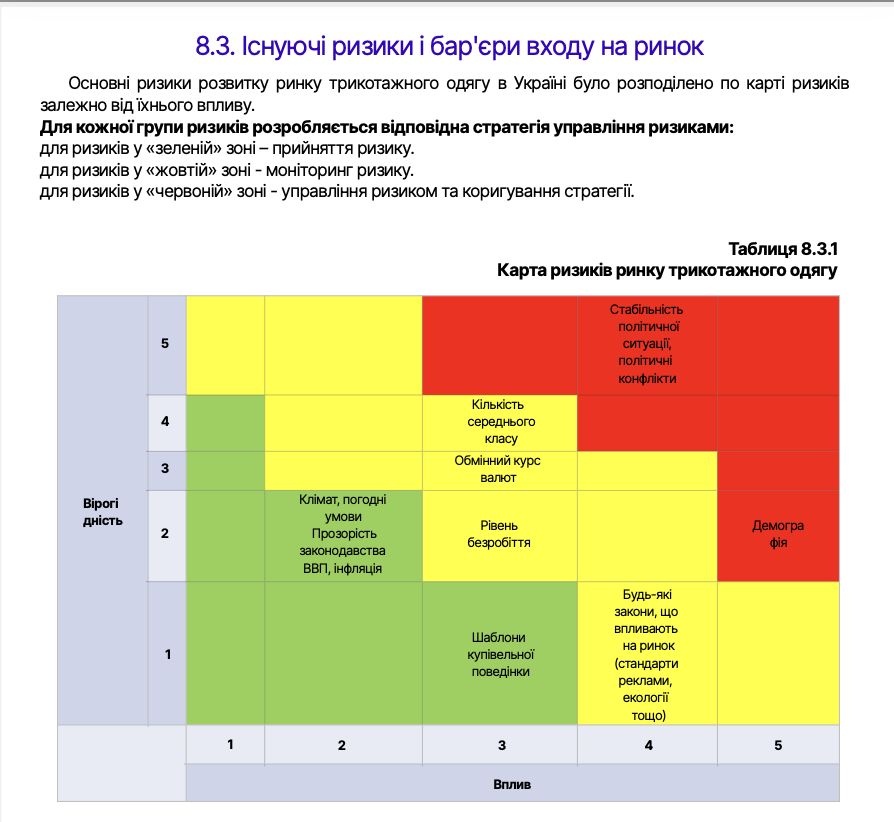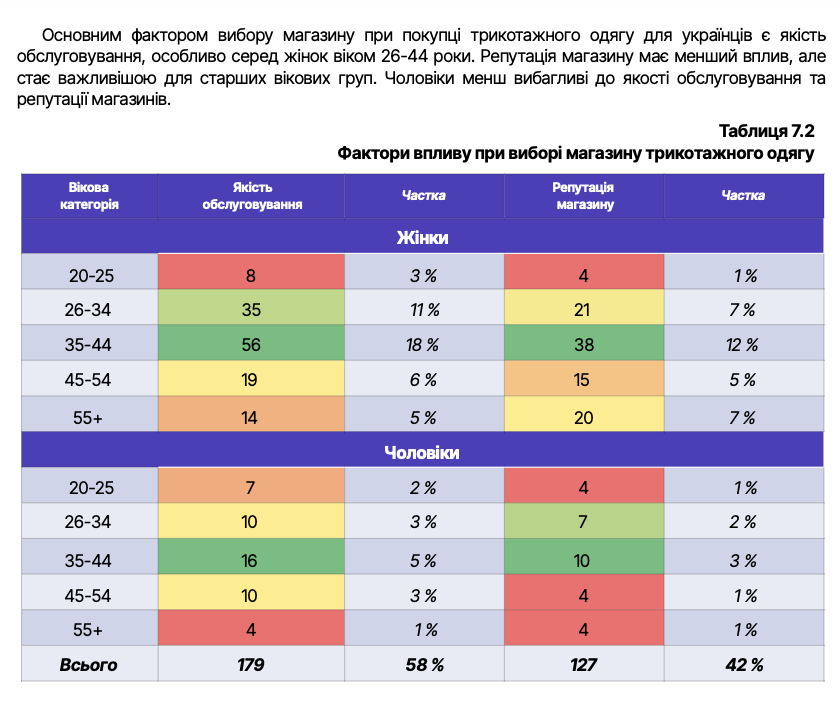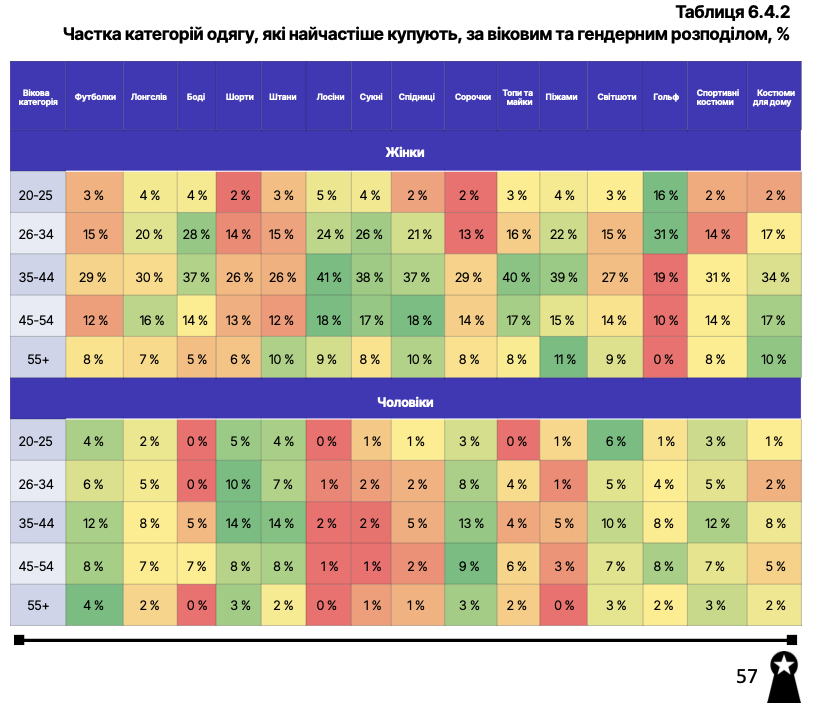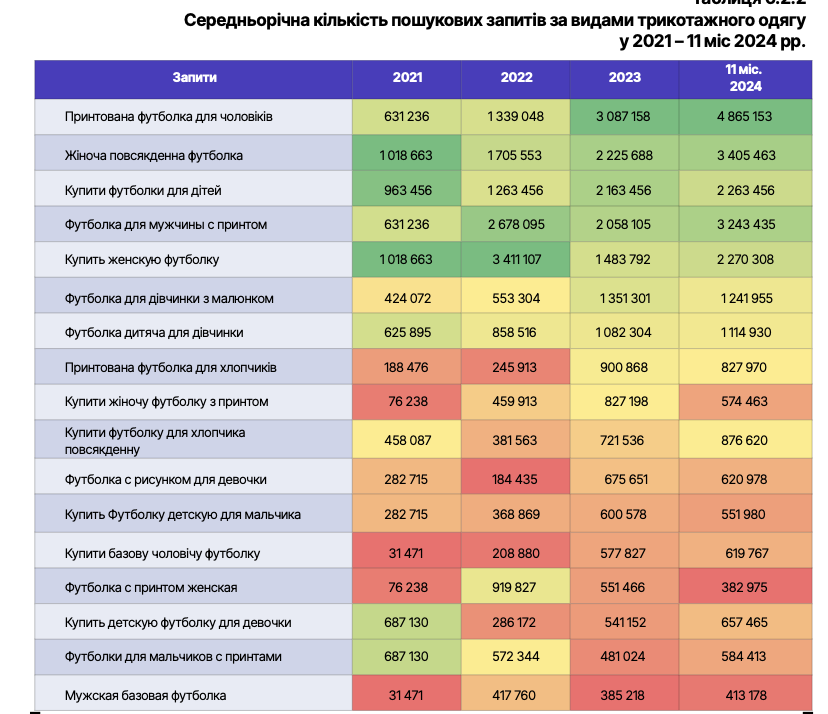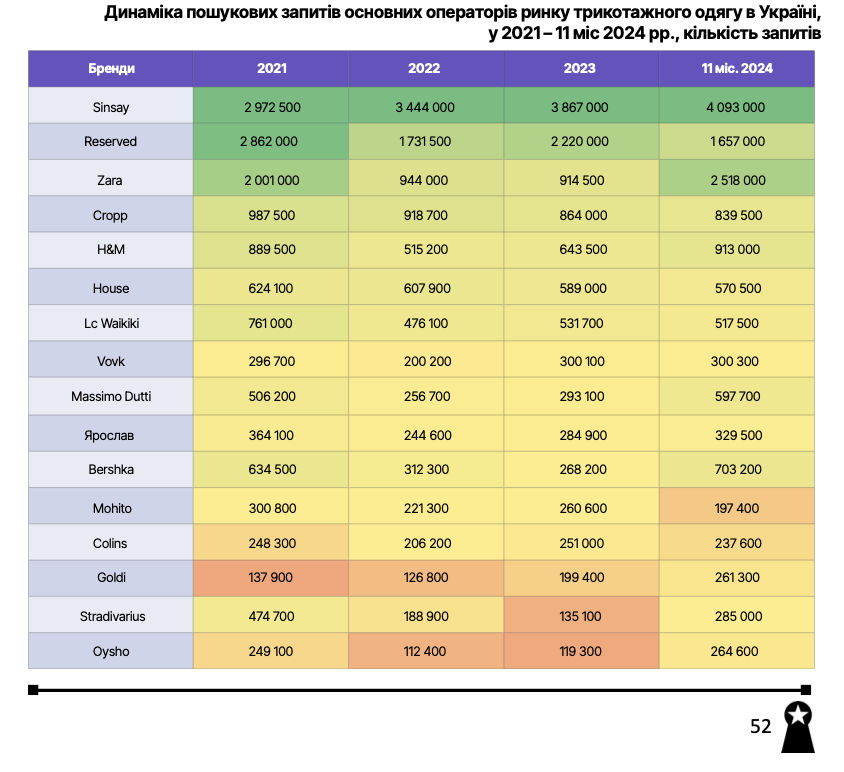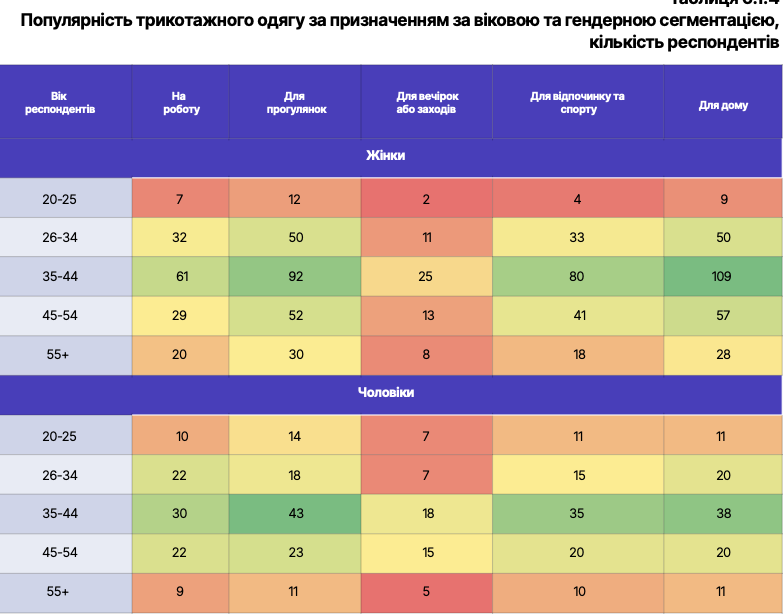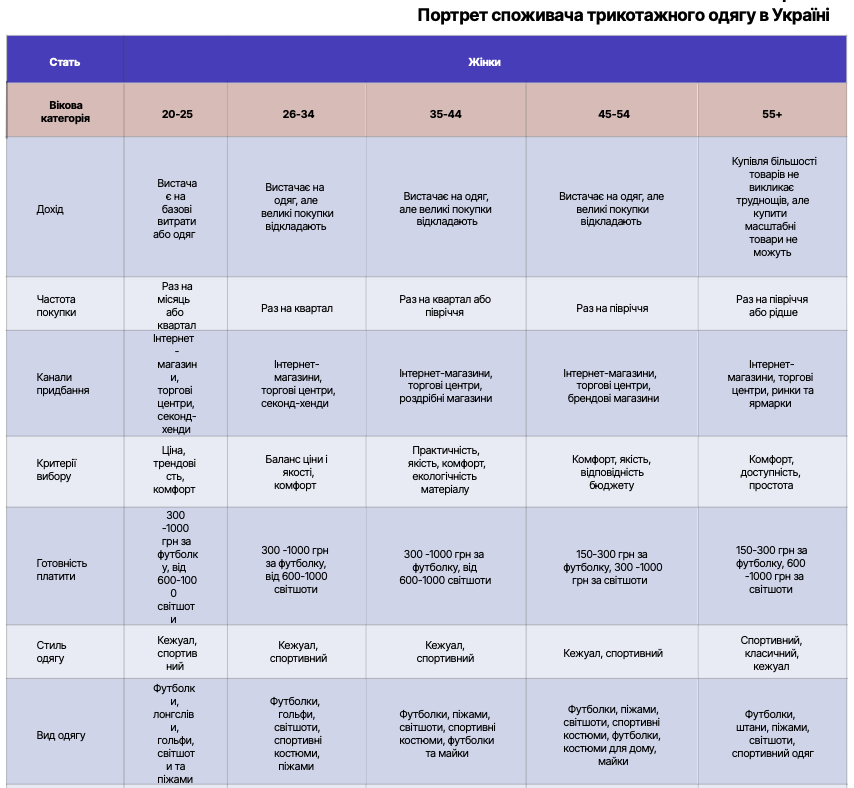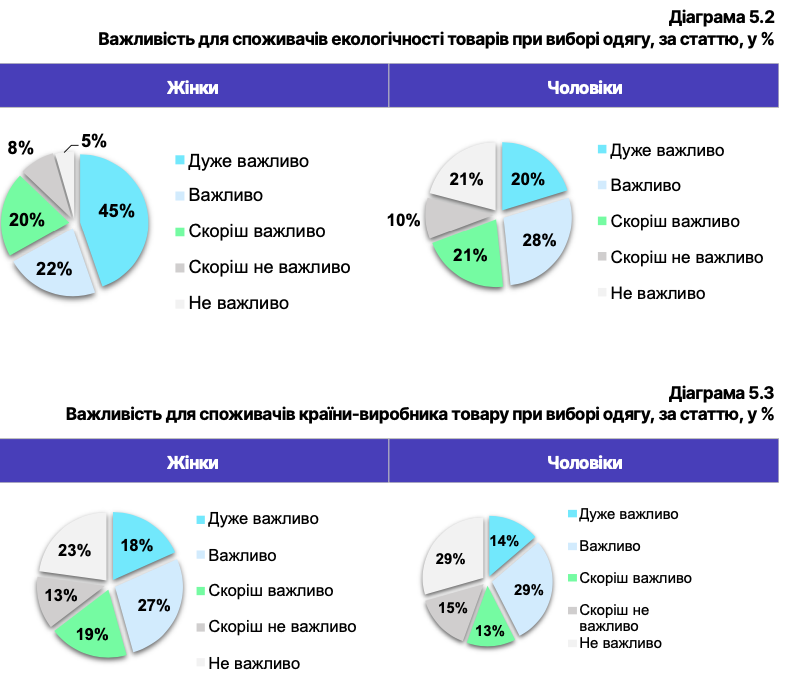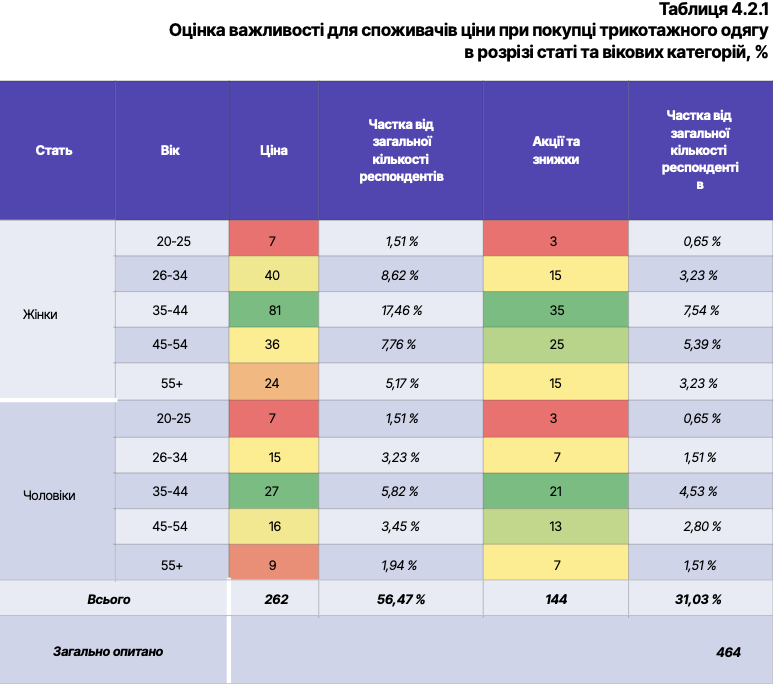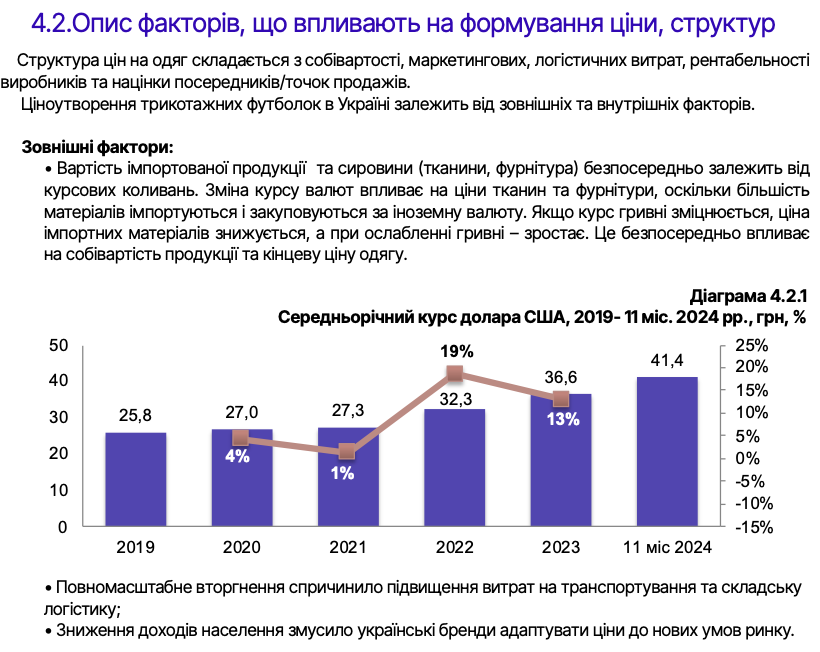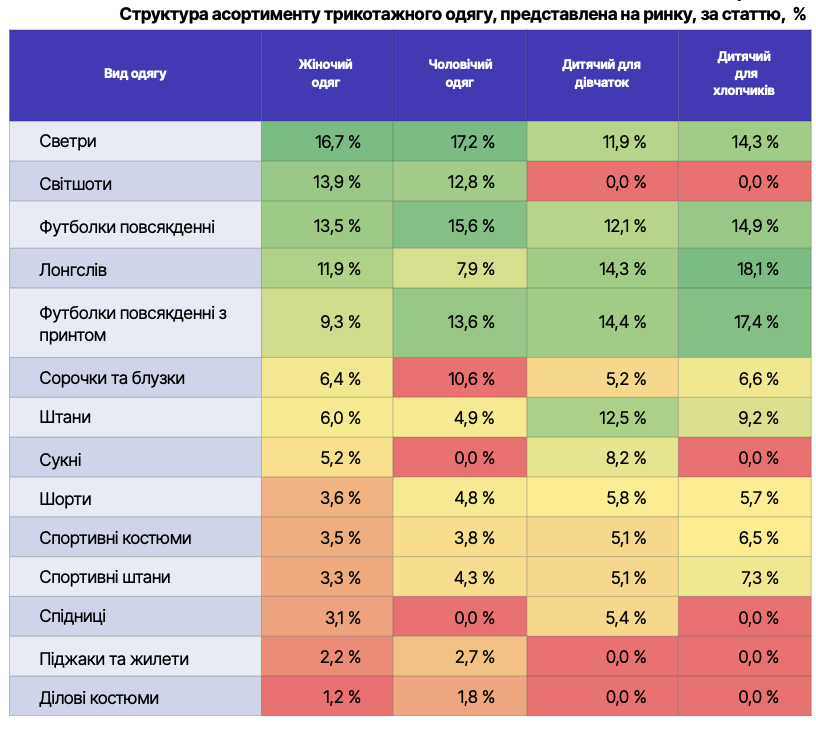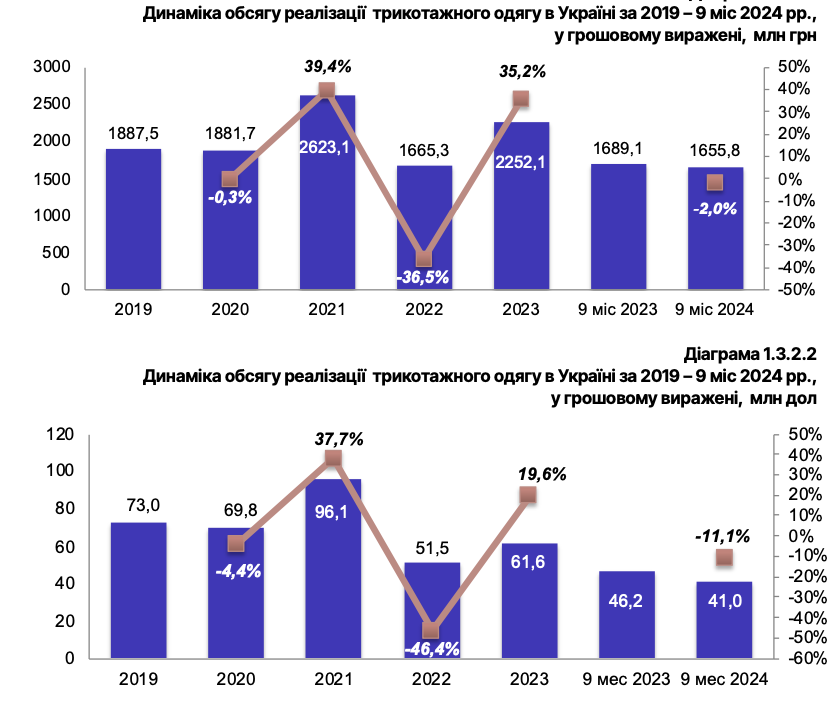A company approached us with plans for a large-scale entry into the knitted apparel market in Ukraine.
The client required detailed, reliable, and well-structured analytics, including:
– the current state and dynamics of the market;
– key competitors and their positions;
– consumer behavior and preferences;
– market development forecast for the coming years.
The goal was to obtain trustworthy insights to confidently invest in the brand and secure a strong market position.
We built the research on a multi-layered methodology that covered both the macroeconomic context and detailed consumer insights:
1. Desk research
– official statistics (State Statistics Service of Ukraine, State Customs Service, National Bank of Ukraine);
– company financial statements;
– industry reports and international databases (UN Comtrade Database).
2. Quantitative research
– CATI method (Computer Assisted Telephone Interviewing);
– 464 respondents from all regional centers of Ukraine;
– analysis of consumer habits, purchase readiness, and brand perception.
3. Digital environment analysis
– Google Ads tools and search analytics;
– monitoring of brand and marketplace websites.
4. Shadow segment assessment
– comparison of official and international import data;
– identification of the share of illegal trade turnover.
The main research document was structured into the following sections:
1. Market capacity (2019–2024) and forecast until 2030.
2. Production, import, and export volumes by key HS codes.
3. Segmentation by price categories (economy, mid-range, premium), style, and target audience.
4. Competitive landscape: market shares, promotion strategies, positioning.
5. Consumer behavior trends: changes caused by the pandemic, wartime conditions, and the growth of e-commerce.
6. Distribution channels and their effectiveness.
7. SWOT and PESTLE analysis to assess investment attractiveness.
8. Macroeconomic pressure: inflation, decreased purchasing power.
9. Exit of international brands in 2022 and their return in 2023–2024.
10. Shortage of qualified personnel due to migration and mobilization.
11. Shadow imports creating unequal competitive conditions.
12. Shift in consumer priorities toward comfort and sustainability.
The client received a comprehensive strategic roadmap for business development, which became a foundational tool for making managerial and investment decisions.
The document included:
– An in-depth assessment of the current market state, with a detailed analysis of dynamics and key influencing factors.
– An industry development forecast for 2025–2030, supported by scenario modeling of potential market shifts.
– Recommendations on brand positioning and communication strategy to strengthen brand recognition and customer loyalty.
– A distribution channel optimization plan, prioritizing the most efficient sales avenues.
– Practical tools for scaling online presence and enhancing competitiveness in the digital environment.
1. Significantly reduced time-to-market through clear analytical insights and structured recommendations.
2. Optimized the investment plan by eliminating unprofitable distribution channels and focusing resources on the most promising directions.
3. Defined a clear market niche and target audience profile, enabling the development of relevant marketing and product strategies.
4. Established a well-substantiated evidence base to support negotiations with partners and potential investors.
